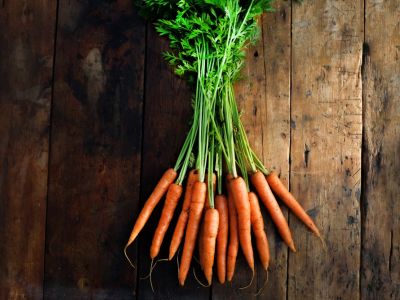The common knowledge when preparing vegetables is to wash them and remove certain bits. The carrot tops, the leafy part of leeks, and broccoli stems are just a few of the edible waste we discard. Utilizing all parts is feasible in most produce, although a few are toxic and should be avoided. Eating everything is a great way to reduce greenhouse gas and enhance the environment and your wallet.
Types of Root to Stalk Vegetables
Many of our root vegetables have parts that are commonly discarded. You can often cook them in different ways for delicious dishes. A very common method of using peelings and greens is in a soup stock. Simmering the unused portions will make a rich and flavorful soup base. Some of the foods you can use in root to stem cooking are:
carrots- peelings and tops potatoes- skins fennel- stalks broccoli- stems cauliflower- cores Swiss chard- stalks watermelon- rinds kale- ribs leeks- greens turnip- greens beets- greens cabbage- core and leaves radish- greens celery- leaves citrus- peels
Things like thick asparagus bases can be used in stock. Avoid green potato skins, pea pods, rhubarb leaves, pits of pomes like apples, as these can be toxic.
How to Use Root to Stalk Vegetables in Savory Dishes
If you can envision it, you can probably do it. Root crop peelings roasted or deep fried make delicious chips. Their greens can be chopped into salads, sautéed, or pickled. Watermelon rind is a great pickling discard. So too are cabbage cores and the tough ribs of plants like kale. Garlic scapes (the flower, essentially) are amazing when lightly cooked. Use the flowers from your chive plant in salad to add delicate flavor and a lively pop of color. Finely chop leek leaves and add to soup or stir-fry. Using vegetables you can eat all of will really pump your cooking creativity.
Stock With Root to Stem Vegetables
One of the easiest ways to avoid food waste is by making a stock. The best flavors will come out if you chop up scraps a bit, but it isn’t necessary if you don’t have time. Cover the vegetable scraps with cool water and add in any seasonings. The stems of thyme, basil, and other herbs will give a nice aroma and flavor while using up these often tossed items. Gently simmer the vegetables for an hour or so. Strain out the solids and put them in the compost heap or tumbler. You can freeze the stock in small batches to use in the future. Add it to soups, stews, sauces, or just use as a consommé. This is a great way to recycle food scraps and is filled with nutrition and flavor.
